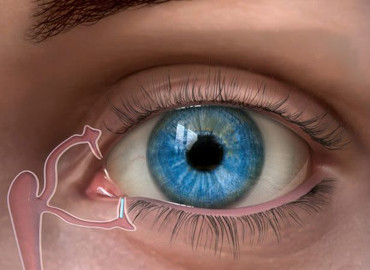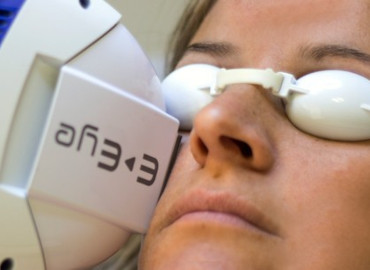
Dry Eyes, is a condition many people confront. It is caused when the tears produced by the eyes are insufficient in moisture, lubrication, and other features that help keep the eyes remain protected. Dry eyes may also be stimulated by environmental aspects such as weather that irritate the eye and dry up tears. It is a common ocular condition, which usually stems from the protective tear film over the surface of the eye evaporating more quickly.
Our Dry Eye Treatment Center aims to provide the best and most comprehensive treatment options available to our patients. Dry eye patients frequently have tried numerous approaches, most of which only offer temporary relief. We are available for dry eye consultations in order to precisely diagnose and treat your dry eye problem.
Our main dry eye treatment options include:
Artificial Tears: Similar eye drops or ointments that simulate the action of tears.
Punctal Plug
These plugs block the drainage of tears and conserve them in the eyes longer. There are temporary and permanent plugs. They are for the most part painlessly inserted and can be removed by an eye care professional. Sealing of the drainage can also be done surgically. This method prevents tears from draining from the eyes and keeps the eyes moisturized.


Intensed Pulsed Light (IPL)
Treatment for dry eye utilizes pulses of light to liquefy and release hardened oils that have clogged meibomian glands in the eyelids. IPL also affects vascularization and inflammation of the eyelids, reducing eyelid redness and stimulating healthy gland function
What causes this to happen is a deficiency in the lipid or oil layer of the tear film, which in most cases is caused by Meibomian Gland Dysfunction (MGD).
Aging Eyes
The tear film peaks at the age of 20, after which it deteriorates. As people age increasing meibomian gland dysfunction can cause the tears produced to typically have less oil in them. So it is quite common for the aging population to have evaporative dry eye syndrome.
Environmental Factors
Windy or desert-like climates worsen dry eye symptoms. Air conditioning in the summer and heating in the winter reduce the humidity. This environmental problem is especially noticeable upon awakening in the morning or when spending time in an airplane cabin. Work environments which are particularly dusty or windy can also worsen dry eye symptoms in people who have dry eye syndrome
Medications
Antihistamines and decongestants are commonly associated with dry eye syndrome. Other medications also associated are some pain relievers, tranquilizers, oral contraceptives, beta blockers, diuretics, and anti-depressants. But in reality, almost any medication can be associated with dry eye syndrome.
Contact Lens Use
Soft contact lenses are plastic sponges which tend to absorb tears. Any tear film insufficiency will be worsened as the lens competes with the surface of the eye for whatever moisture is available. Meanwhile, rigid contact lenses need adequate tear film to properly float on the surface of the eye. In either case, contact lens use in dry eye syndrome will result in inappropriate contact between the lens and the ocular surface with a resulting increase in contact lens-related complications.
Computer Use
Sitting in front of a computer, as well as many other activities involving heightened levels of concentration, can be associated with lower blinking rates. With less blinking there is more evaporation, which certainly can worsen dry eye symptoms.
Certain Diseases
Many diseases are associated with dry eye syndrome. Rheumatoid arthritis, lupus (systemic lupus erythematosis), thyroid disease, diabetes, Sjogren’s syndrome, scleroderma, other connective tissue disorders, and even some vitamin deficiencies are common associated diseases.
Eyelid Malfunction
Incomplete blinking or poor lid closure when sleeping are major causes of evaporative dry eye syndrome, independent of the presence or absence of meibomian gland dysfunction.

